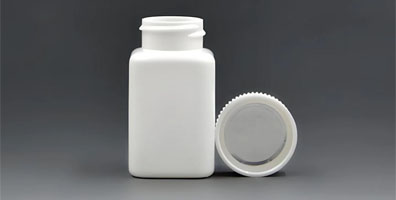Bottle chip, formally known as Polyethylene Terephthalate (PET) Resin for Bottles, is a type of high molecular polymer primarily used for packaging. At room temperature, bottle chip appears as white granular solids, which can be molded and blown into transparent sheet materials through injection molding and blow molding processes.

The mainstream production process for bottle chip is the direct esterification method, which mainly consists of two stages: esterification and polycondensation (CP), and solid-state polycondensation (SSP) to achieve high-viscosity bottle chip. Bottle chip is produced using purified terephthalic acid (PTA) and monoethylene glycol (MEG) as raw materials, along with auxiliary materials such as IPA and colorants. Under the action of a catalyst, these materials undergo an esterification reaction and polymerization to form polyethylene terephthalate (PET), which is then further polymerized to increase viscosity. According to the current production process, producing one ton of bottle chip requires 0.855 tons of PTA and 0.332 tons of MEG. In addition to the main raw materials, auxiliary materials such as isophthalic acid (IPA) can be added in appropriate proportions (usually 0-2%) based on the specifications of the product. This copolymer modification reduces the regularity of the polyester molecular chain structure, facilitating the processing and molding of preforms and increasing the transparency of the bottles.
The mainstream production method for bottle chip is the direct esterification method, with the production process mainly divided into two stages: esterification and polycondensation (CP) and solid-state polycondensation (SSP). The main raw materials, PTA and MEG, along with the third monomer IPA, colorants, and thermal stabilizers, undergo a continuous liquid-phase esterification reaction and continuous polycondensation reaction to form polyester chips. These chips are then subjected to a solid-state polycondensation reaction to increase viscosity, resulting in higher crystallinity bottle-grade chips. Due to the esterification polycondensation nature of bottle chip, its molecular linkage is somewhat reversible, making it a mainstream recyclable plastic in the market. Recycled bottle chip can be used to produce polyester fibers or reprocessed into recycled bottle chip (rPET). Currently, rPET is widely promoted in regions such as Europe.
According to the standard “Polyethylene Terephthalate (PET) Resin for Bottles” (Standard No.: GB/T 17931-2018), bottle chip is classified into two categories based on its use: food packaging and non-food packaging. Bottle chip can maintain the intrinsic quality of food and beverages for an extended period and has high recycling value, making it one of the most widely recycled plastic packaging materials globally, with outstanding environmental friendliness. Beverage demand is the largest downstream demand, accounting for 69% of the total consumption demand. Specifically, the demand for bottled water, domestic carbonated beverages, and sheet materials is relatively high.
Bottle-grade PET production enterprises usually sell bottle chip, which downstream packaging companies process into PET preforms, sheets, etc. Currently, bottle chip materials are mainly used to produce bottled water, carbonated beverage bottles, hot-filled beverage bottles, edible oil bottles, beer bottles, condiment packaging, food and non-food packaging, etc. In China, the downstream demand for bottle chip mainly includes soft drinks, exports, oils, sheets, and others. The largest domestic demand is for soft drinks, accounting for about 50%, followed by exports at 36%, oils, sheets, and others at 5%, 9%, respectively. In terms of domestic consumption in specific fields, the largest downstream consumption of bottle chip is for bottled water packaging, accounting for 40.5%, followed by the sheet material field at 13.1%, and then fruit and vegetable beverages, carbonated beverages, and edible oil packaging, each accounting for 7-8%.
This is the first one.